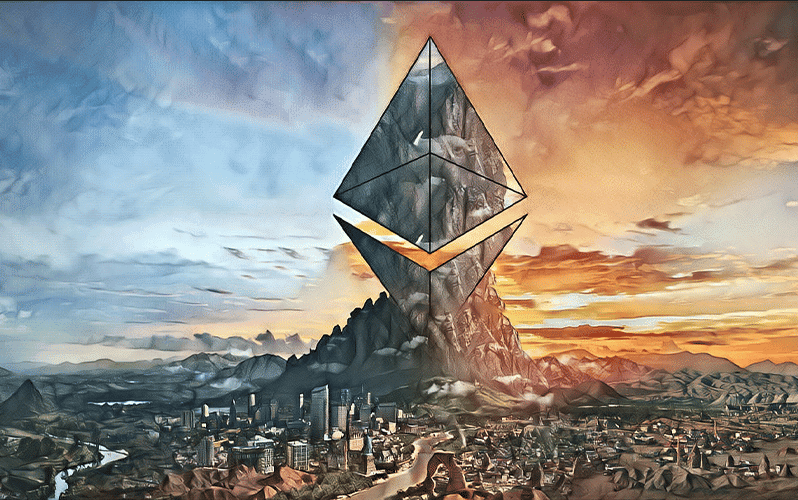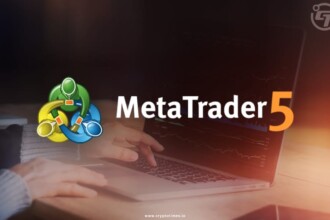Ethereum is an inevitable term in the cryptocurrency market. Despite being the second-largest cryptocurrency in terms of market capitalization, it is a one-stop destination for multiple decentralized financial services.
Ethereum is the emperor of public blockchain technology and smart contract services, which most other projects rely upon. It has matured to an unbeatable stage of cutting-edge decentralized technology.
However, you may think about the murmurs of the Ethereum Bitcoin competition. It is incomprehensible to compare Ethereum with Bitcoin because both have different goals, features, and missions.
Ether is the native cryptocurrency of Ethereum. Ether coin and Ethereum aspire much more in the cryptocurrency space than a transaction medium and storage of value. Here is what you need to know about the Ethereum protocol and the history of Ethereum.
What is Ethereum?
Ethereum is an open-source, decentralized blockchain for smart contract technology. It is an umbrella term for DeFi and dwelling for digital money, NFT, and global payments.
Ethereum powered tools and technologies let developers build countless decentralized applications and banking services. Users can send, receive money, lend, and borrow digital assets with a single click and an attached wallet.
The NFT marketplace on Ethereum permits users to create and trade non-fungible tokens. Artists can convert their digital artworks to NFT and retain their ownership rights. Besides, they can also claim loyalty rewards on every resale.
Ethereum provides stablecoins that share some of the powers of Ethereum. Stablecoins behave more like a fiat currency and stay unchanging even when the Ethereum token is volatile.
Ethereum Stablecoins are secured by Cryptography. Stablecoins can be exchanged for Ethereum tokens and easily transferred through an Ethereum account.
How does Ethereum work?
Ethereum works on a Proof of Work consensus algorithm called Ethash. To add a block into the chain, miners need to crack a complex puzzle that requires a colossal hardware setup and enormous power consumption. On successful mining, miners get rewarded with Ethereum’s native token.
Like every other decentralized system, the Ethereum network is connected across different computer networks worldwide. These computers act as nodes. The sole of the Ethereum network is ‘Ethereum Virtual Machine (EVM),’ and its physical state is unable to be defined.
Essentially, EVM is not a single entity but is maintained by thousands of connected nodes. It is like a decentralized master computer, and every node holds a copy. EVM acts like a runtime environment for compiling and deploying Ethereum based smart contracts.
Ethereum Virtual Machine is where smart contracts and all the other accounts live. Smart contracts are written in Solidity language. It will be compiled to ‘bytecode in the next stage and deployed in EVM.
Importantly, EVM defines the directions for tallying a new valid state from block to block. Therefore, the entire operation of the Ethereum protocol surrounds this virtual machine. So, it is necessary to keep EVM continuous, uninterrupted, and immutable for the seamless working of the protocol.
History of Ethereum
Vitalik Buterin came up with an exciting blockchain technology that addresses the drawbacks of the Bitcoin platform. He wanted to introduce a blockchain platform that works just beyond trading.
Ethereum’s white paper was published in 2013, mentioning how it differentiates itself from the Bitcoin platform.
Initiating the development of the Ethereum network required a huge amount. Therefore in 2014, Buterin and his colleagues Charles Hoskinson, Gavin Wood, Jeffery Wilk, and Anthony Di Lorio initiated a token presale. After securing sufficient funds from the token sale, the team started working towards the Ethereum mission, and the Mainnet was launched in 2015.
Ethereum went for its ‘Homestead upgrade’ in 2016. Later in the same year, the platform suffered a major DAO hack that drained 3.6 million tokens from the system. The platform’s security has been questioned, and in response to the attack, Ethereum has introduced a hard fork update in the system.
The controversial hard fork has created a disagreement among the developer team and community members. Half of the community voted, whereas the remaining half disagreed with the update. Consequently, the Ethereum blockchain separated into Ethereum and Ethereum Cash.
In 2017- Ethereum enforced the ERC-20 standard, allowing programmers to build applications on top of the Ethereum blockchain. The first popular Ethereum-based application is a game called ‘Crypto Kitties.’
Though Ethereum has gone through many significant updates on the roadmap, the scalability and security issues stay unresolved. Hence, Ethereum has come up with Ethereum 2.0 upgrade, a batch of interconnected upgrades to improve the scalability, security, and infrastructure of the Ethereum platform.
The main drive of ETH 2.0 is to change the Proof of Work (PoW) consensus to Proof of Stake (PoS) because PoW remains the major hindrance to scalability. The development stages have introduced the Beacon chain in phase 0, shard chains, and Roll-Up in phase 1, and look forward to implementing cross-shard interoperability and Dapp development tools in phase 2.
Ethereum has travelled a long way in history and emerged as a one-stop solution in the crypto industry. Now, it is a non-replaceable term for the future of digital money.
What is Ether?
Ether is the utility token that fuels the Ethereum ecosystem. The ticker symbol ETH represents it. Ether is the second-largest digital currency that appears next to Bitcoin everywhere.
Ether is used to store value for investment purposes and peer-to-peer transactions in the network. Moreover, it facilitates payment for network services, transaction fee payment, and governance mechanisms in the ecosystem.
72 Million Ethers were pre-mined, and 60 Million were sold in the ICO held in 2015. The current market capitalization is $366,302,238,161 with a circulating supply of 120,091,028 ETH.
- GAS Fees
Users need to pay a transaction fee in Ether to perform any service on the Ethereum network.
The transaction fee is a function of storage needs, bandwidth use, and computational complexity required to execute a smart contract or perform a transaction.
Every payment requires a certain amount of gas and an associated gas fee, which is calculated in Ether. This intermediary monetary value is called Ethereum’s gas.
Use cases of Ethereum
- Decentralized autonomous organization (DAO)
As the name suggests, it is an autonomous organization in which decision-making is transparent and democratic.
Ethereum DAO provides a transparent working mechanism and avoids voting malpractices. It needs voting by all members of the organization to implement any change.
DAO exists on the blockchain and is controlled by guidelines entrenched in the smart contract. Smart contracts, once embedded, cannot be altered in any case.
For instance, MolochDAO is used for funding Ethereum projects.
- Banking systems
Ethereum banking system is a popular choice for multi-million companies and giant banks globally. Organizations like JP Morgan, Microsoft, and US banks have partnered with Ethereum to incorporate blockchain technology into business.
US banks with their partners have formed an open-source blockchain platform for businesses named Quorum.
A leading Spanish bank, Santander, has issued a $20 million bond on Ethereum. Issuance and settlement are digitized and automated on the chain. According to news, they became the first institution that employs a public blockchain to manage all aspects of a bond.
Other institutions such as Societe Generale, Cadence, Taurus also issued tokenized securities and bond offerings on the Ethereum blockchain services.
- Data Management
Organizations rely on the Ethereum Mainnet for fast dealing and management of data. Ethereum public blockchains can be used in numerous ways to deal with private data and data verifications. Some of them are checking data integrity, validation, public data release, and secure hashing of data.
BBVA’s blockchain loan platform records finalized loan details hashed on the Ethereum public blockchain. ANSA, an Italian news agency, permits readers to verify the news and its authenticity by recording the news details and origin on the Mainnet. EthSign keeps signed electronic documents on the Ethereum blockchain.
- Cargo Industry and Supply chain Management
Supply chain companies are joining hands with Ethereum blockchains for accurate shipment dealings. It helps avoid misplacement of goods and assists in proper tracking of shipments.
CargoX, a supply chain company, joined Ethereum for seamless document transfer. MINESPIDER is a blockchain-based platform for mineral sourcing tied up with Ethereum to track the supply chain.
Ethereum Initiatives for Organizations
- Enterprise Ethereum Alliance (EEA)
Enterprise Ethereum Alliance is an initiative to empower enterprises and decipher business challenges using state-of-the-art Ethereum blockchain technology solutions.
EEA is a member-led industry organization and a global community of blockchain innovators, adopters, and technophiles to empower organizations.
Enterprises can build solutions on the public Ethereum Mainnet, adopt technology and take the support of experts. EEA empowers Ethereum as a whole by promoting global adoptions.
- Baseline projects
Baseline protocol is an open-source endeavor. It is a protocol framework incorporating cryptography, messaging, and blockchain to cheaply furnish private and secured business processes using the Ethereum Mainnet.
Baseline authorizes enterprises and organizations to synchronize complex, interconnected, multiparty business processes with privacy. Besides, it allows enterprises to carry out business processes without transferring their records and systems.
Future of Ethereum
A shift from ETH 1.0 to ETH 2.0 can facilitate advanced infrastructure and development tools without altering any working mechanism. Ethereum anticipates the following enhancements in working after ETH 2.0.
- Proof of Stake will reduce energy consumption and make Ethereum eco-friendly.
- Shard chain implementation can split transaction data across different chains, thereby increasing throughput.
- Beacon chains and shared chains work to improve scalability.
- ETH 2.0 envisions improving security and reducing the gas fees in the network.
Crypto mania is spreading everywhere. Increased acceptance of DeFi, DAO will elevate Ethereum’s business and product adoptions.
According to technophile, Proof of Stake can eliminate existing disadvantages of the network to a more considerable extent. Therefore, completing Ethereum 2.0 implementation can start a much more secure new era in the Ethereum network.
Conclusion
Ethereum has gained tremendous popularity among investors and partnered companies due to its technological advancements and real-world applications. In the opinion of Ethereum proponents, it is the most advanced cryptocurrency project with massive acceptance in terms of usefulness.
However, drawbacks like scalability, high gas fees, security concerns, increased energy consumption hinder small-scale adoptions. Ethereum is working towards eliminating the disadvantages. Developers and the community expect a tremendous increase in large-scale adoption of Ethereum products in the future.
Ethereum investors and cryptocurrency enthusiasts anticipate that developments in the Ethereum protocol will reflect in the ETH value. Consequently, Ether will continue growing and may give a handful of returns to investors.







